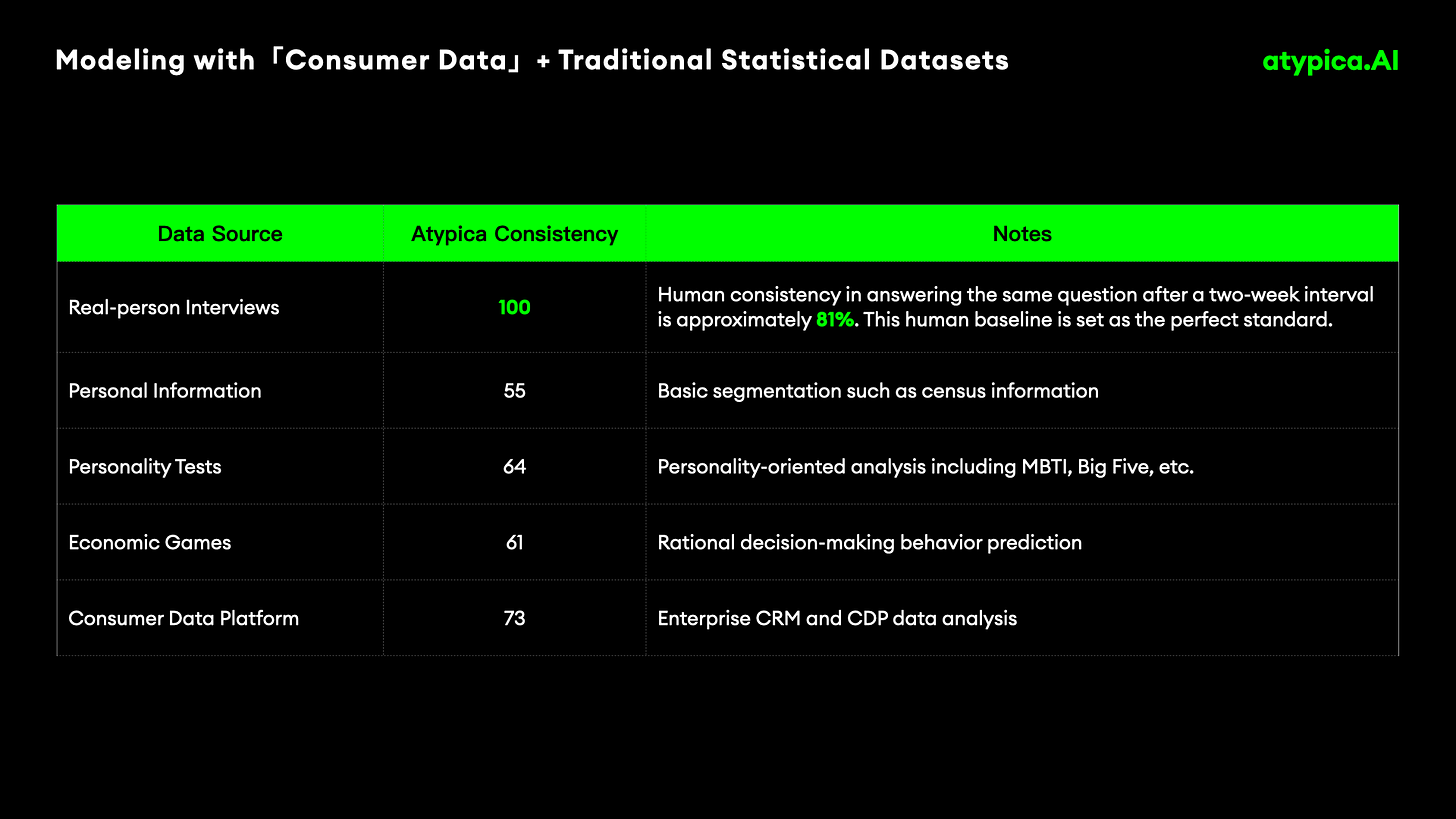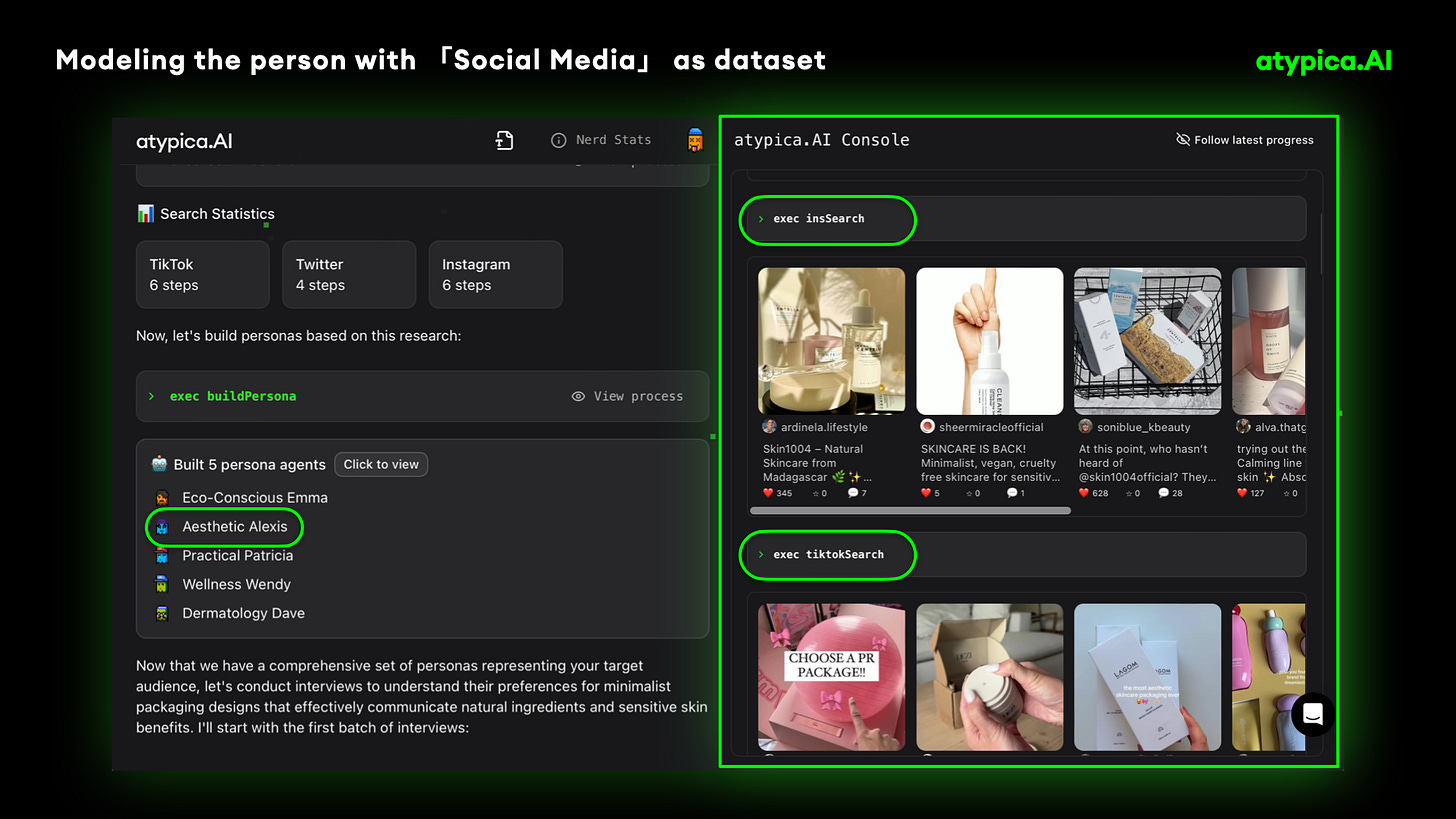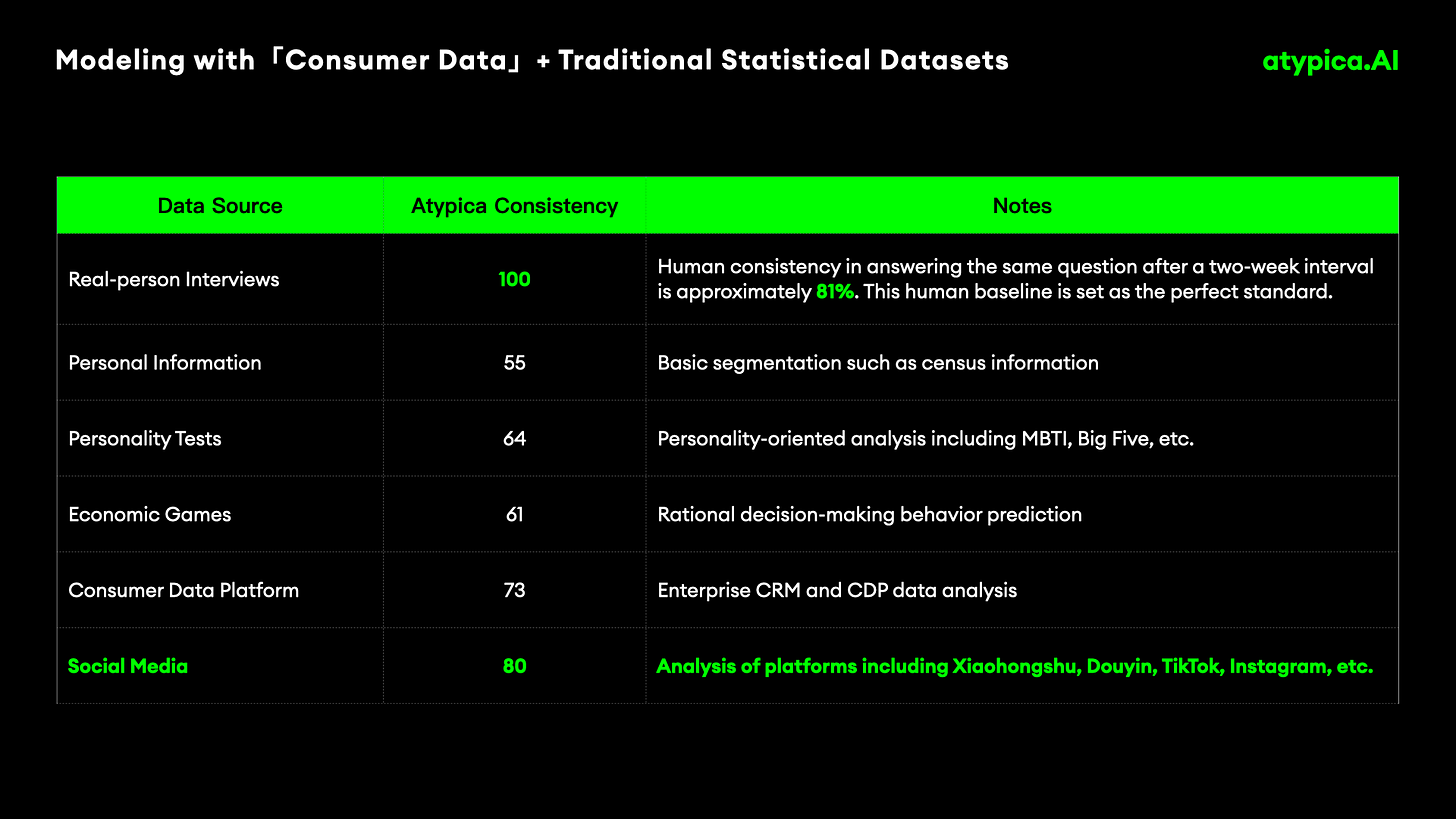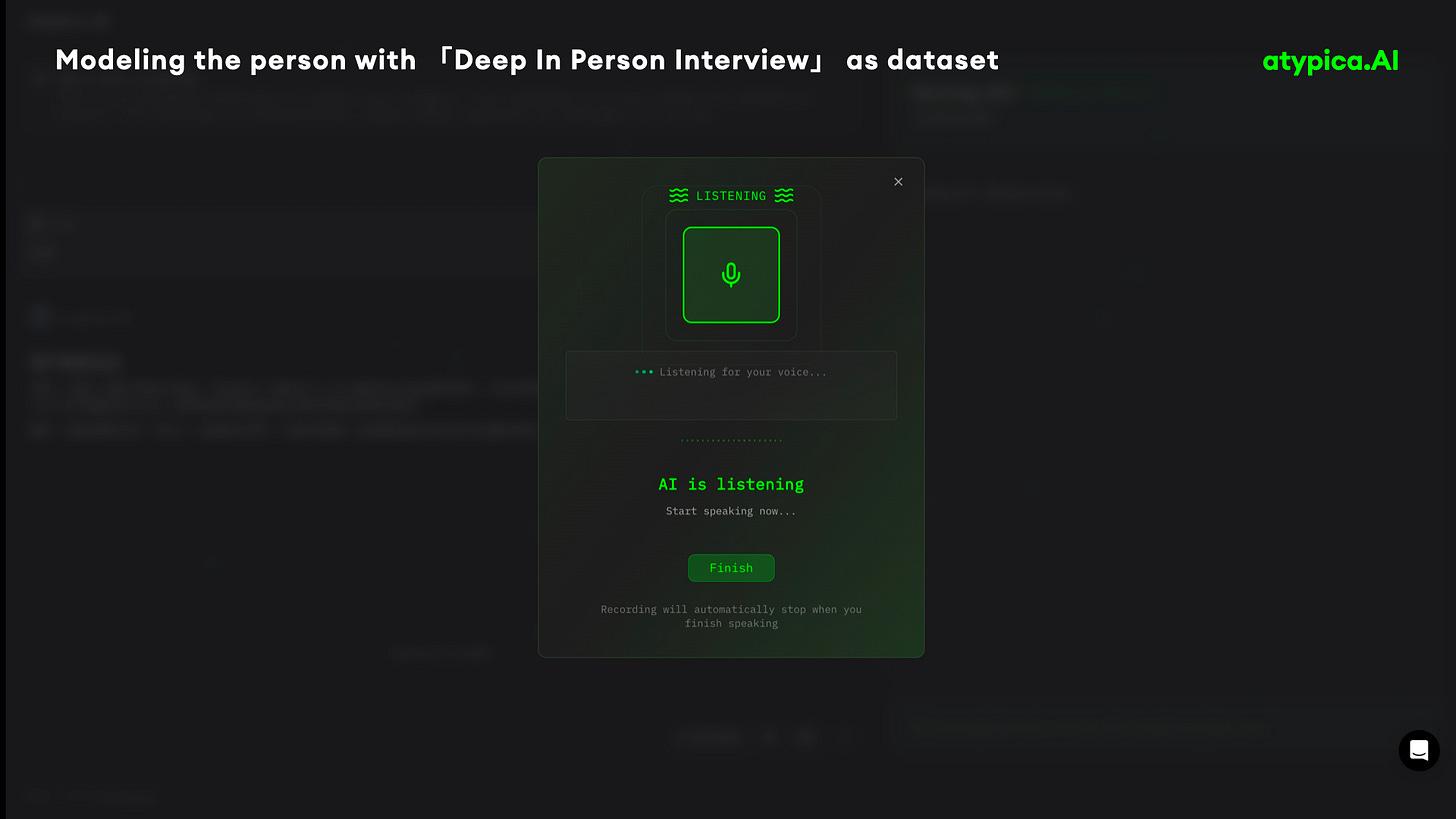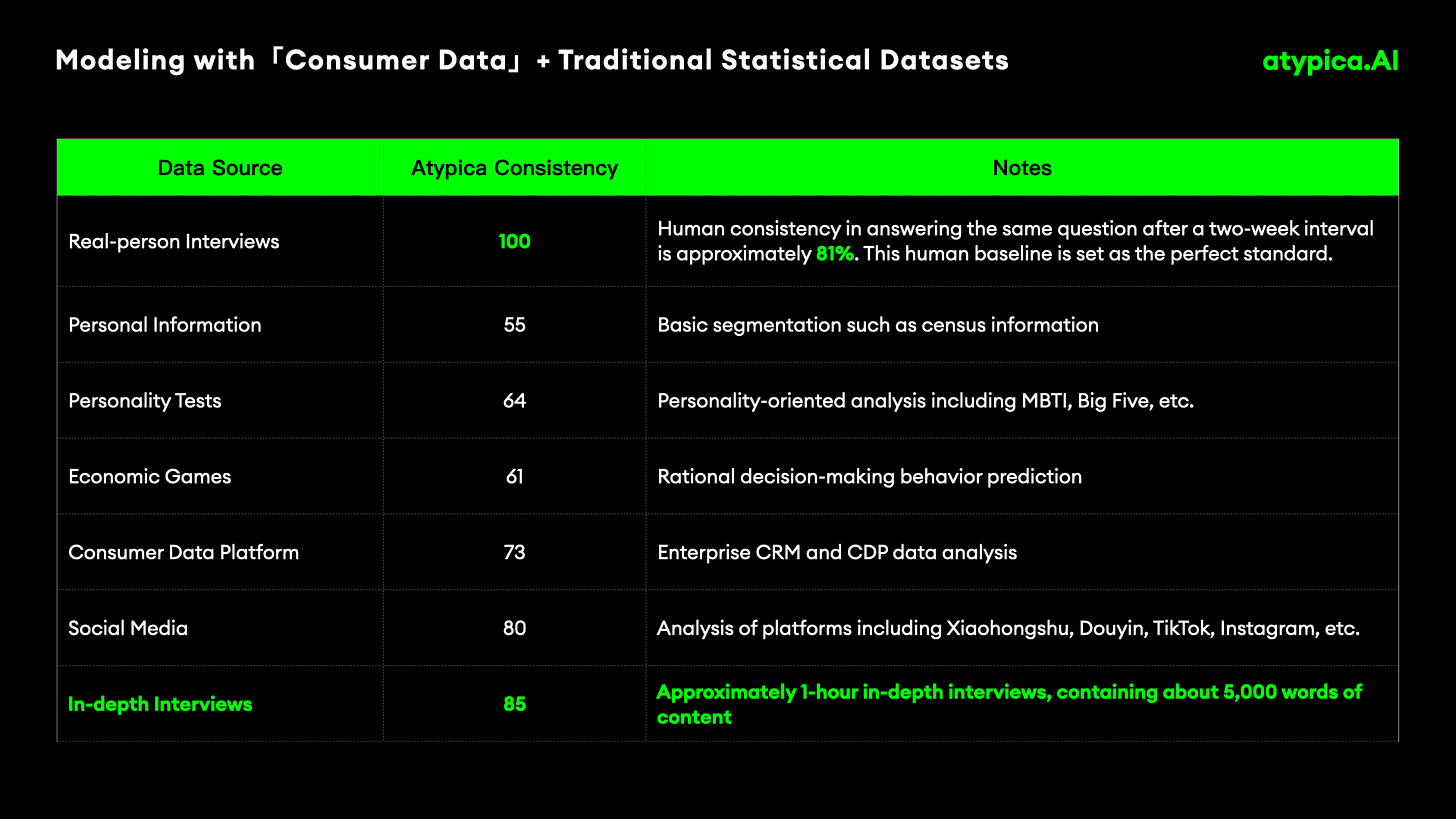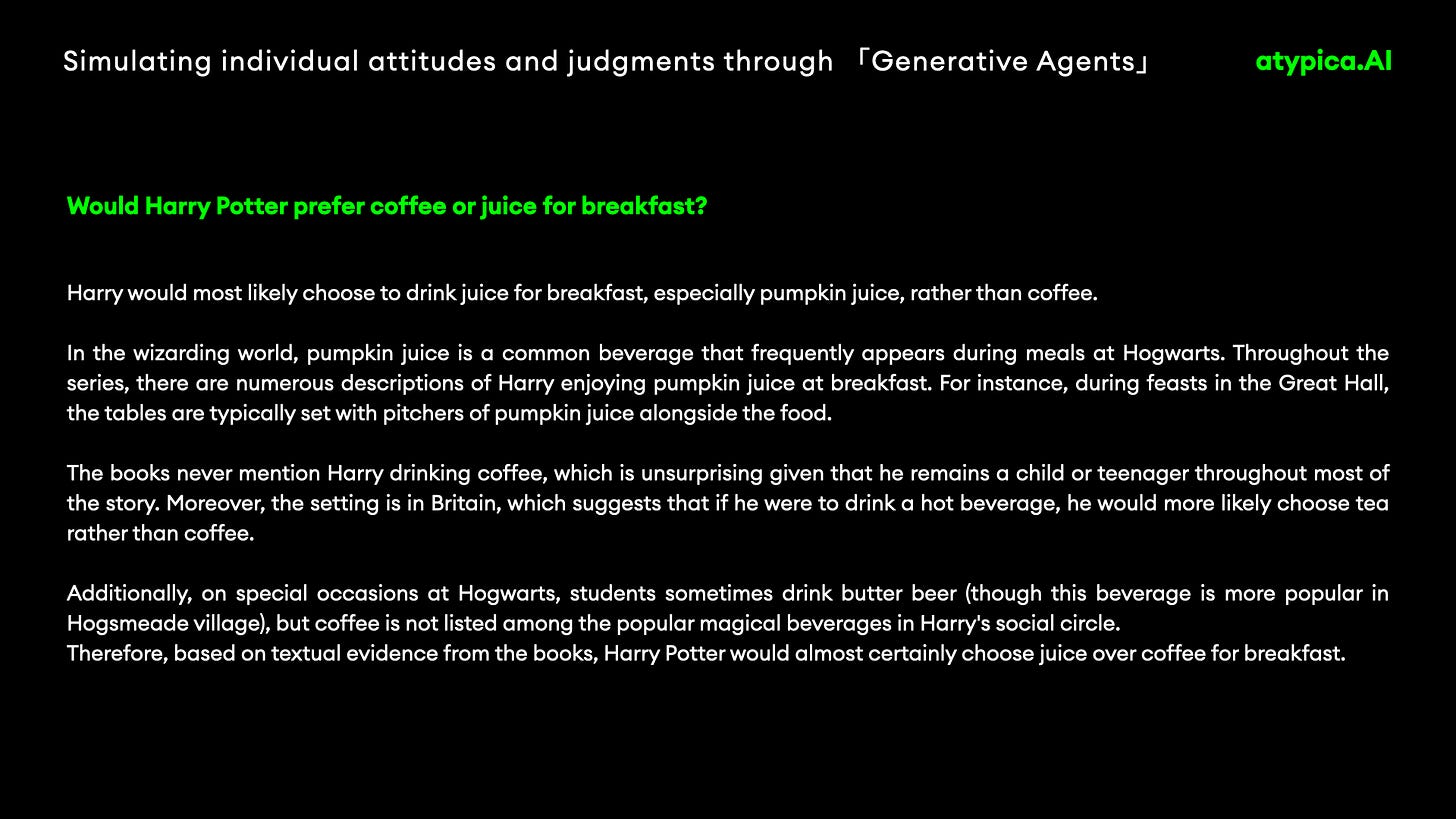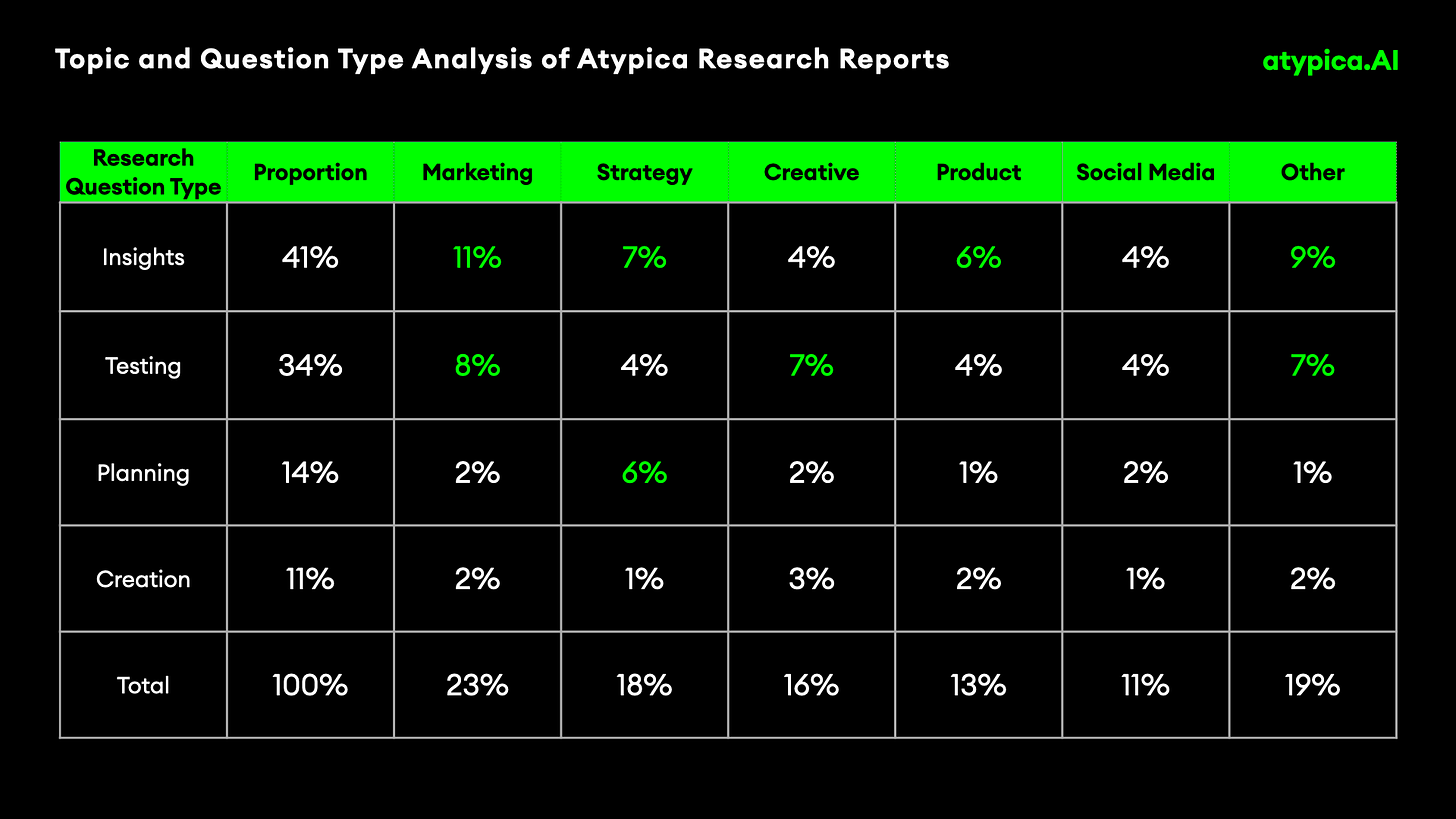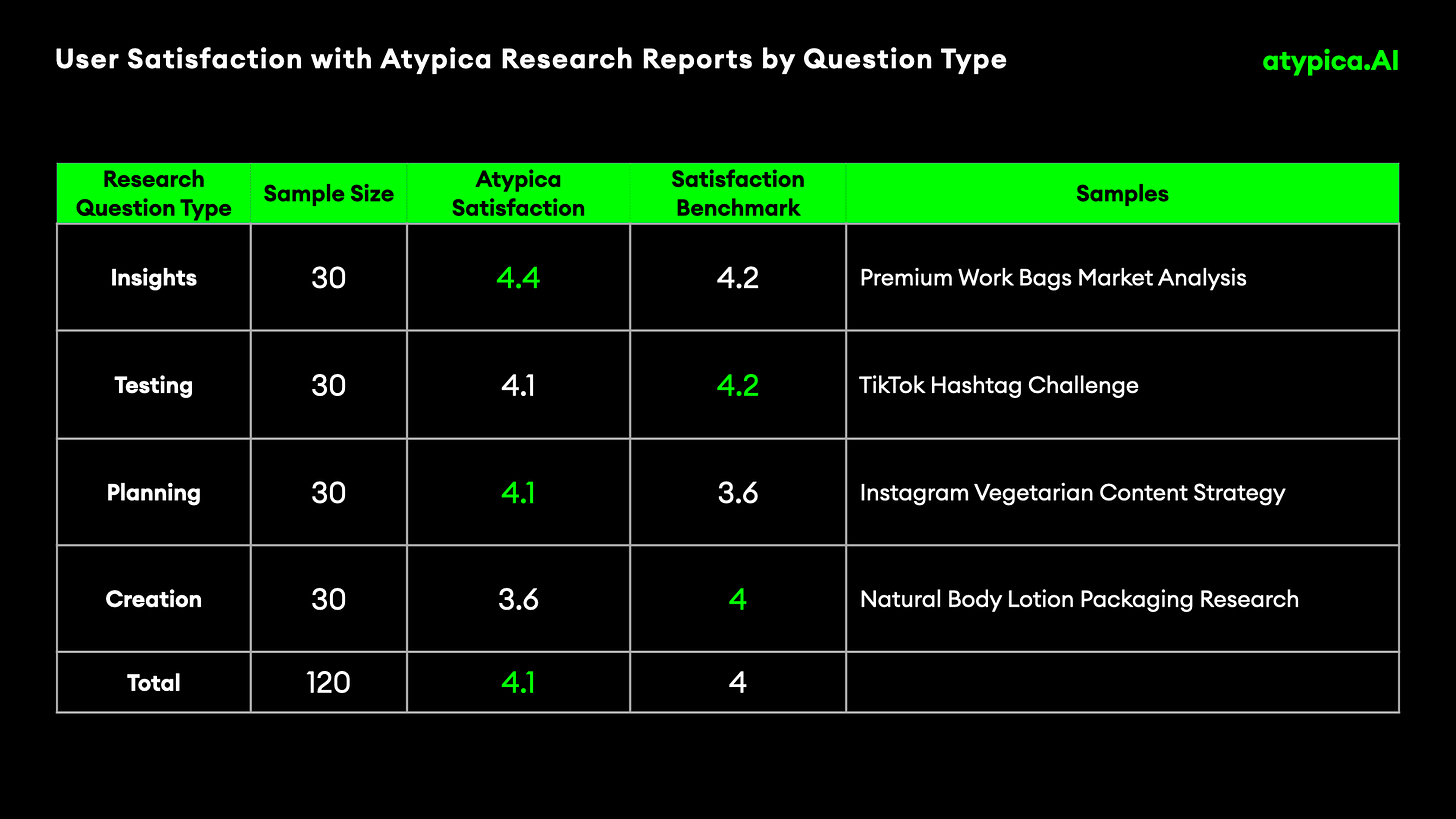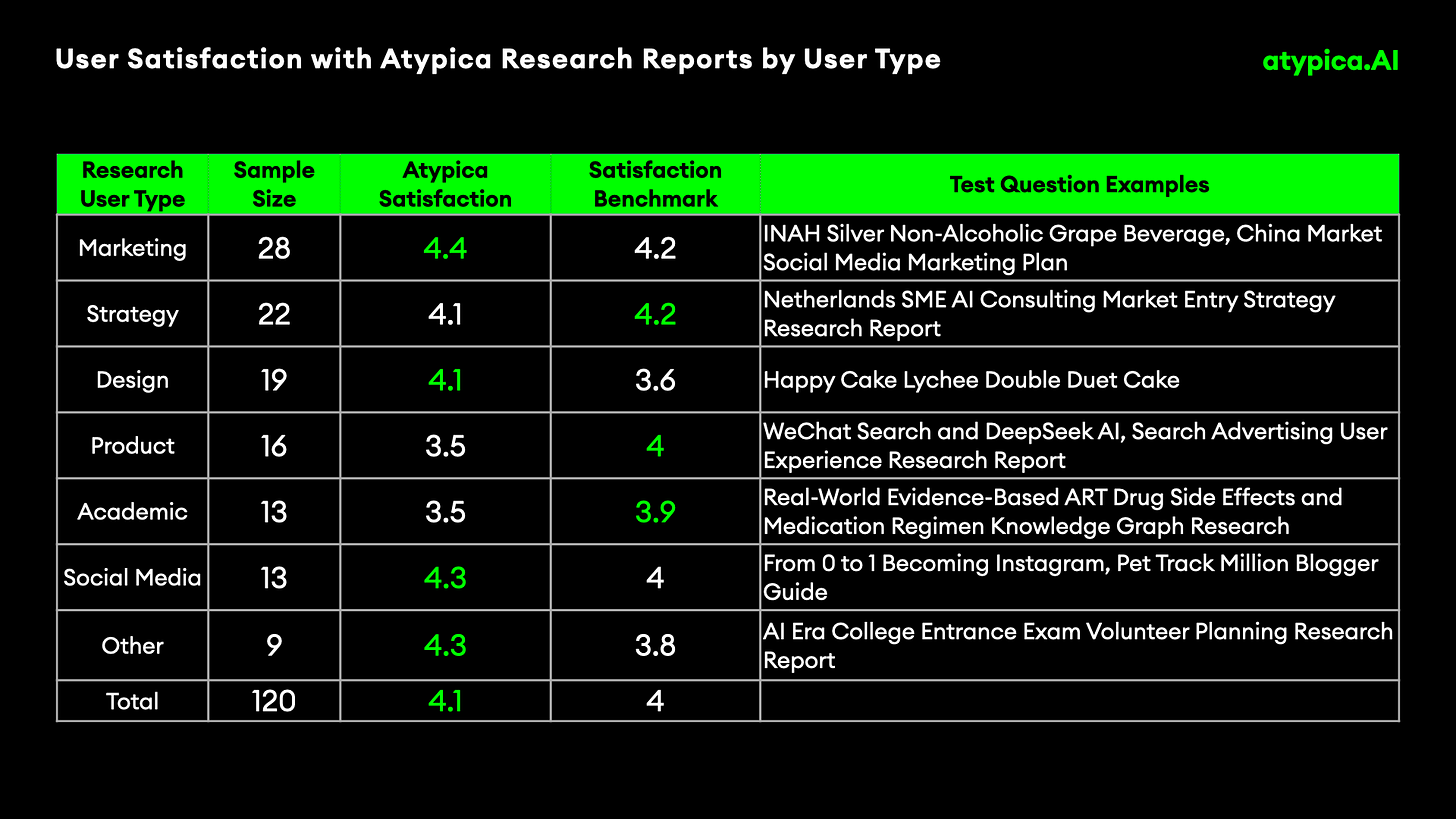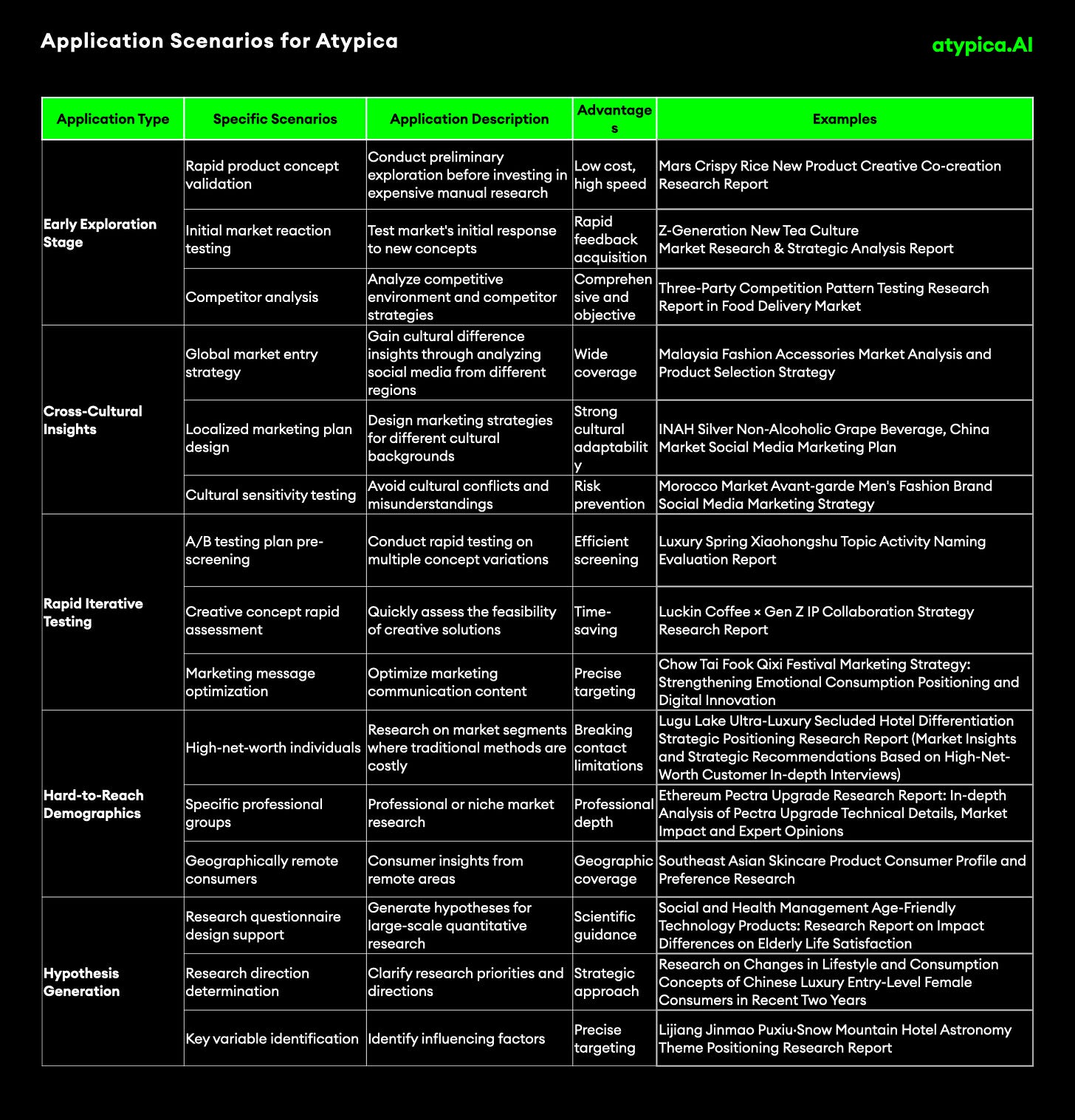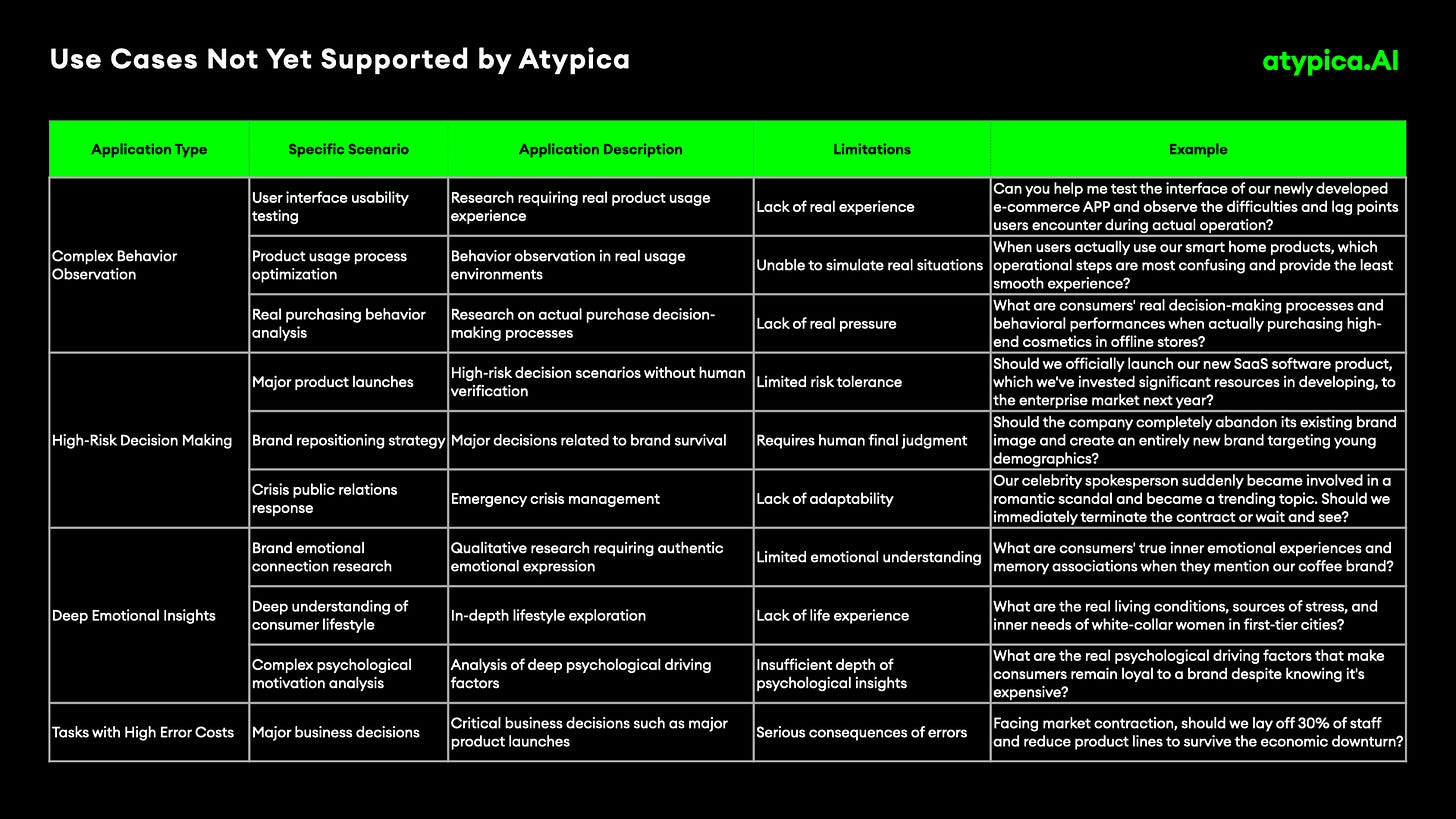atypica.AI: The Intelligent Agent That Understands Consumers
The AI Research Agent Simulating Consumers
1. Business Problems are Complex Problems
Business and social problems are often "wicked problems" with no standard answers (H.W.J. Rittel, M.M. Webber). "Simulation" offers multidimensional possibilities for these problems, involving trade-offs, games, and constraints. Atypica.AI starts by simulating consumer behavior and decision-making.
2. Building Consumer Agents
Simulating human behavior and decision-making is not a new concept. Prior to the emergence of large language models, scholars used mathematical models such as Cellular Automata to model collective human behavior. However, these methods were inadequate in addressing individual differences and complex subjective decision-making logic.
Cellular Automata
Large language models have made individual simulation possible, enabling consumer modeling through Agent-Based Modeling (ABM). The core approach is to build models for individuals based on their detailed data using large language models, which we call "subjective world modeling." For example, after injecting Harry Potter corpus into a large language model, it can simulate Harry Potter's potential judgments and thought processes, inferring behaviors not explicitly mentioned in the original text.
3. Evaluation Methods for Modeling
Regarding the confidence level of the Subjective World Modeling approach, we verify it through the following method. If you want to know the basis for a consumer's behavior and decisions, the most accurate way is to ask them directly. Research shows that a person's consistency in answering the same question two weeks apart is approximately 81%. Therefore, we use 81% as the consistency baseline and set it as the full score standard (a standard score of 100). Then, we model the person using different corpora, ask the person and their agent the same question, and calculate the consistency of their answers.
Modeling Consumers Using "Personal Information, Personality Tests, Behavioral Data," etc.
We first tested modeling using personal information and standardized psychometric data, including dimensions like MBTI type and Big Five personality traits. The consistency score was 55-64 points. Subsequently, we tested consumer data from CRM and CDP, extracting and modeling behavioral characteristics such as purchasing patterns, brand preferences, and price sensitivity. The consistency score was 73 points.
Modeling Consumers Using "Social Media"
Personal information and personality tests are both static data. Although behavioral data is dynamic, it is difficult to understand the "what" and "why" questions (for example, what part of a product someone likes, why they like a product, etc.). Therefore, we further used "social media" content as dynamic data to model consumers (including: Xiaohongshu, Douyin, Instagram, TikTok, X).
First, we input the research question. The large language model deconstructs this question to conduct a search, finds corresponding social media posts and replies, and uses this as the corpus to input into the large model to generate the consumer model. On questions related to this research topic, this intelligent agent can achieve a consistency of 79 points with a real person's answers.
When processing social media data, atypica.AI understands consumers through the following three levels:
Explicit Expression Layer: Directly records the preferences and attitudes explicitly expressed by consumers, such as "I like eco-friendly products," and "Price is my most important consideration".
Implicit Logic Layer: Identifies consumers' potential thought patterns through language analysis technology, such as risk aversion tendencies, herd mentality, receptiveness to innovation, etc.
Emotional Association Layer: Analyzes the emotional tone when consumers describe different consumption experiences, identifying positive and negative emotional triggers.
Modeling Consumers Using "In-depth Interviews"
Furthermore, we adopted the "in-depth interview" method to model consumers. The specific method is to use AI to conduct interviews with consumers, with each interview lasting about 1-2 hours. The AI will ask follow-up questions based on the consumer's responses, and the entire process generates an average of 5,000 to 20,000 words of transcribed text, just like a short biography of this consumer.
In-depth interviews cover multiple key dimensions, aiming at comprehensively capturing an individual's cognitive patterns, value systems, and behavioral tendencies:
Life Journey Narrative: Participants are asked to tell their life stories, including significant turning points, setbacks, and moments of achievement. This content helps AI understand the individual's growth trajectory and personality formation process.
Value Exploration: Through open-ended questions, the core value concepts of participants are deeply explored, including their views on family, work, and social responsibility, as well as their understanding of concepts such as success, happiness, and justice.
Expression of Social Views: Participants' perspectives on current social issues are collected, including political leanings, attitudes towards social problems, and expectations for the future. This content provides a foundation for the intelligent agent's performance in social science research.
Decision-Making Pattern Analysis: Through discussions of specific scenarios, the participant's thought process, trade-off factors, and decision-making criteria are understood when they face choices.
The interview transcripts, along with the analytical dimensions mentioned above, form this consumer's intelligent agent. When questioned, the agent responds as this individual based on the viewpoints, values, and experiences expressed during the interview. The advantage of this method lies in maintaining information integrity and contextual coherence, eliminating the need to predetermine which information is important, and instead allowing the large language model to autonomously identify and utilize relevant information from the complete interview content. This approach achieved a consistency score of 85 points in evaluation.
4. Using Consumer Agents
Atypica.AI has established 300,000 synthetic consumer agents based on "social media" data and 10,000 real consumer agents based on "in-depth interviews." This number is continuously increasing, forming an agent ecosystem that covers a diverse consumer group.
Users can ask questions. After identifying it as a business problem, Atypica will intelligently call upon relevant consumer agents to conduct simulated interviews. These intelligent agents will provide in-depth feedback that aligns with their personality traits and behavioral patterns, enabling the collection of large-scale, multi-dimensional consumer insights.
By interviewing these consumer agents as research subjects, Atypica.AI summarizes a research report. The research report is only an intermediate state of research; in the future, there will be more in-depth results, such as directly conducting product development, social media operations, etc. In future versions, Atypica has two advanced functions to further enhance the platform's personalization and interactivity:
Proprietary Consumer Agents: Users can build exclusive, private consumer agents through the "In-depth Interview" task or by directly uploading consumer interview corpora, ensuring the uniqueness and specificity of the insights.
Precise Control of Research and Analysis: During the research process, users can use the "Precise Control of Research and Analysis" function to independently invite specific consumer agents for special interviews, achieving a more controllable and precise research design.
5. Atypica's Research Results
We randomly selected 1,200 reports generated between June 10-20, 2025, for analysis.
The distribution of research topics is as follows:
We randomly selected 30 business research reports from each of four types of reports for users to score for satisfaction, half of which were generated by Atypica, and the other half were manually written. The scoring was marked from 1-5 points, where 1 point is 'dissatisfied' and 5 points is 'very satisfied,' and then we analyzed the scores of these two sample groups.
Analysis by Question Type
According to this table, we can see the performance evaluation results of Atypica.AI on different types of research questions. This evaluation is based on 120 samples (30 for each type) and compares the user satisfaction of reports generated by Atypica with manually written reports.
Insights performed the best, with Atypica's satisfaction score reaching 4.4 points, exceeding the standard value of 4.2 points;
Testing scored 4.1 points, with the standard at 4.2 points; although it is lower than the standard score, the gap is minimal;
Planning scored 4.1 points, far exceeding the standard value of 3.6 points, proving Atypica's strength in strategic planning;
Creation was relatively low at 3.6 points, with a standard value of 4.0 points, indicating that Atypica still has room for improvement in innovative product opportunities (which may also suggest the need for different approaches to achieve this).
Overall, Atypica's total satisfaction score of 4.1 points exceeds the standard value of 4.0 points, indicating that the quality of AI-generated consumer insight reports can meet or even exceed user expectations for traditional manual reports, especially with outstanding performance in complex consumer insight analysis.
Analysis by User Type
This table demonstrates Atypica.AI's satisfaction performance across different user types, based on evaluation results from 120 samples. The data shows that Atypica performs excellently across most user groups:
Best-Performing User Types:
Marketing users achieved the highest satisfaction at 4.4 points, exceeding the benchmark of 4.2
Social media and other users both reached 4.3 points, surpassing their respective benchmarks of 4.0 and 3.8, respectively.
Well-Performing User Types:
Strategy and Design users both scored 4.1 points; Strategy users were close to the 4.2 benchmark, and Design users significantly exceeded the 3.6 benchmark.
Relatively Weaker but Still Acceptable User Types:
Product and Academic users both scored 3.5 points. While below the standard values of 4.0 and 3.9, this performance is still considered acceptable.
Overall, the total satisfaction score of 4.1 exceeds the 4.0 benchmark, indicating that Atypica excels in application-oriented fields such as marketing, social media operations, and educational consulting, while still having room for improvement in areas requiring deeper professional expertise such as product development and academic research.
6. Atypica Application Scenarios & Limitations
Based on the above results, we have summarized the applicable and non-applicable scenarios for Atypica:
Atypica's Applicable Scenarios
Atypica's Currently Non-Applicable Scenarios
7. Conclusion: Starting from Agents That Understand Consumers
Atypica.AI represents a new stage in consumer insight analysis—a shift from passive analysis that relies on historical data, to active simulation based on agents.
From Insights to Action
Atypica.AI is not positioned as a replacement for traditional research, but rather as an innovative option that offers advantages in speed and scale when facing complex social and business problems, bringing multi-dimensional perspectives and greater decision-making fluency to decision-makers.
The value of research lies not in generating reports, but in driving effective action. By connecting with more MCPs (Model Context Protocol), Atypica.AI is building a complete ecosystem from insight to execution, for example:
Automated/Semi-automated New Product Development R&D: Based on consumer insights, intelligently generate product concepts and functional specifications
Automated/Semi-automated Social Media Operations: According to consumer preferences, intelligently plan content strategies and publication timing.
Redefining the Value of Research
This shift from "static analysis" to "dynamic execution" allows companies to complete the entire process from problem identification to strategy formulation within hours, achieving an agile business model that moves from "research first, then decide" to "simultaneously research, decide, and execute."
Atypica.AI forms a synergistic and enhanced relationship with traditional research: traditional methods provide depth and precision, while AI agents provide breadth and speed. This combination enables companies to maintain an agile response capability in a complex and ever-changing business environment, thereby gaining a decisive competitive advantage.
References
Generative Agent Simulation Research
Park, J. S., O'Brien, J. C., Cai, C. J., Morris, M. R., Liang, P., & Bernstein, M. S. (2023). Generative agents: Interactive simulacra of human behavior. Proceedings of the 36th Annual ACM Symposium on User Interface Software and Technology (UIST '23), October 29-November 01, 2023, San Francisco, CA, USA. ACM, New York, NY, USA. https://doi.org/10.1145/3586183.3606763
Personality Psychology and Trait Theory
Costa, P. T., & McCrae, R. R. (1992). Revised NEO Personality Inventory (NEO-PI-R) and NEO Five-Factor Inventory (NEO-FFI) Professional Manual. Psychological Assessment Resources.
Jung, C. G. (1971). Psychological Types. Princeton University Press. [Theoretical foundation for MBTI]
Cognitive Psychology
Kahneman, D. (2011). Thinking, Fast and Slow. Farrar, Straus and Giroux.
Marketing Theory
Kotler, P., & Armstrong, G. (2014). Principles of Marketing (15th ed.). Pearson.
Values Research
Rokeach, M. (1973). The Nature of Human Values. Free Press.
Schwartz, S. H. (1992). Universals in the content and structure of values: Theoretical advances and empirical tests in 20 countries. Advances in Experimental Social Psychology, 25, 1-65.
Original VALS Research
Mitchell, A. (1978). Values and Lifestyles (VALS) Program. SRI International, Stanford Research Institute.
SRI International. (1978-1989). Values and Lifestyles™ (VALS) Market Research Methodology. Strategic Business Insights.
VALS Theory Development
Strategic Business Insights. (1991). VALS2 Framework Update. SRI International Consulting Services Division.
Early Market Research
Gallup, G. (1935). The Pulse of Democracy: The Public-Opinion Poll and How It Works. Simon & Schuster.
Nielsen, A. C. (1923). Radio Index Methodology. A.C. Nielsen Company.
Modern Market Research Tools
Google Inc. (2005). Google Analytics Platform Documentation. Google Analytics.
Adobe Systems. Adobe Analytics Platform Documentation. Adobe Experience Cloud.
ABM Applications in Consumer Behavior
Rand, W., & Rust, R. T. (2011). Agent-based modeling in marketing: Guidelines for rigor. International Journal of Research in Marketing, 28(3), 181-193.
Negahban, A., & Yilmaz, L. (2014). Agent-based simulation applications in marketing research: An integrated review. Journal of Simulation, 8(2), 129-142.
Macal, C. M. (2016). Everything you need to know about agent-based modelling and simulation. Journal of Simulation, 10(2), 144-156.
Arthur, W. B. (2021). Foundations of complexity economics. Nature Reviews Physics, 3(2), 136-145.
Miller, J. H., & Page, S. E. (2007). Complex Adaptive Systems: An Introduction to Computational Models of Social Life. Princeton University Press.
Harvard Business Review Core Articles
Korst, J., & Tremblay, A. (2025). How Gen AI is transforming market research. Harvard Business Review, 103(3), 78-87. [May-June 2025 Issue]




